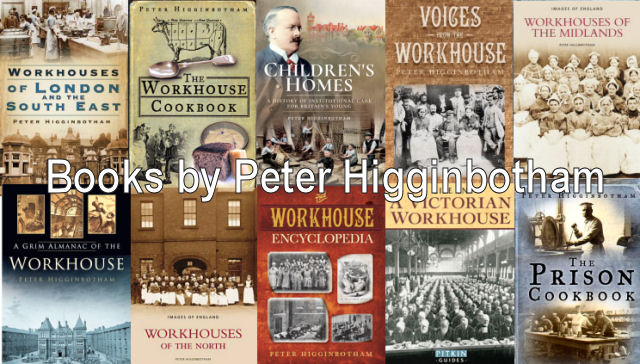Poor Relief in France
Prior to the French Revolution in 1789, poor relief in France consisted of many local charities and foundations, mostly with a religious connection of some sort. These were all abolished by the Revolution and their property confiscated. On 19th March, 1793, the new governing National Convention decreed that "Every man has a right to gain a livelihood by his own labour if he is able-bodied; by free relief if he is not in a condition to work. The duty of providing for the subsistence of the poor is a national obligation." An initial experiment in distributing relief to the poor via local agents of the State, and funded by a special vote in the national budget, proved an expensive failure.
The Executive Directory, which succeeded the Convention in 1795, formulated a new system based around the administrative area of the commune — broadly analogous to the English parish or township, but more widely varying in population. Each commune (or sometimes, group of communes) was to have two separate local committees, one for indoor and one for outdoor relief. The local committee for indoor relief was a bureau d'hospice or a bureau d'hôpital depending on whether the institution under its charge was a hospice (almshouse) or hospital. The outdoor relief committee was the bureau de bienfaisance. To each committee was restored, as far as was practicable, the property and endowments which had belonged to bodies occupying a similar position in the commune prior to the Revolution.
The bureaux de bienfaisance offered two main types of relief. The more usual was secours en nature (relief in kind) — usually bread, sometimes supplemented in winter by fuel such as charcoal. Less often, cash handouts were provided for purposes such as the payment of rent, or the purchase of first communion dresses, although in such cases the payments were often made direct to the landlord or supplier of goods.
There were, however, serious problems with the new scheme. First, there was no adequate provision for the creation of relief authorities in all districts. An indoor relief committee could only be formed in a commune where a charitably founded hospital already existed. There was no provision out of public funds of new institutions where they might be needed. A law enacted in 1799 decreed that every district should have a bureau de bienfaisance but there was no means of enforcing this. In 1833, of the 36,000 or so communes in France, only 6,275 had bureaux de bienfaisance, a number which had slowly risen to around 16,000 by 1896. Secondly, the status and constitution of the relief committees caused problems. Members of the committees were not elected but appointed by commune councils. The members served without pay and usually included the mayor, the local priest, doctors, and other prominent persons. Once appointed, however, the committees were practically autonomous and not subject to supervision by the civil authorities. There was also no formal relationship between the indoor and outdoor relief committees which could lead to a lack of coordination or efficiency in their activities. The activities of each committee were strictly limited to within their own commune which sometimes resulted in serious inequalities between the relief provided in neighbouring communes. Most seriously, the Convention's original principle of a "right to relief" was effectively abandoned as no provision was made for state funding of poor relief. The relief committees had to obtain their income from endowments, bequests, donations, church or house-to-house collections. Committees were also allowed a share of the droit des pauvres (a surtax on tickets for the theatre and public spectacles) and, from 1843, a third of the proceeds of the sales of burial spaces in the communal cemeteries. An indirect source of income for indoor committees came from various female charitable religious organisations, mostly nuns from Catholic sisterhoods, who generally undertook the internal management of hospitals and hospices, although paid employees were still required to assist them. Commune councils, could make up any shortfall in the committees' incomes, but only if the so chose. Ultimately, the relief provided by the committees was discretionary (facultatif) rather than obligatory (obligatoire).
The discretionary nature of relief meant that local committees were free to exercise their prejudices in deciding who was to receive it. There was a statutory requirement of one year's residence in a commune before someone became eligible for relief. On top of this, the committee could require that recipients enrol their children in primary school or have them vaccinated. Relief could be denied to anyone whom the committee deemed unworthy such as single mothers, prostitutes, or alcoholics.
During the 19th century, a number of important separate developments took place. A decree of 1808 required French Departements (analogous to British counties) to provide dépôts de mendicité, or casual wards, for the reception of vagrants. Vagrancy was made a police offence, with offenders liable to arrest and detention in a dépôt. In 1838, Departments were also made responsible for the insane and required to set up establishments for their reception, or to make appropriate arrangements with local hospices that had sufficient accommodation. Finally, beginning in 1811, Departments were made responsible for the relief of orphaned and deserted children, towards which the state did make a contribution. Such children (enfants assistés) could be boarded out with a family, or placed in the hands of a hospice which took on their legal guardianship. A body of inspectors was also appointed to monitor the treatment of children.
A reorganisation of the poor relief system began in 1886 with the creation of a sub-department of the Ministry of the Interior devoted to poor relief, and in 1888 of a new advisory body, the Conseil Supérieur de l'assistance publique. The Conseil Supérieur formulated the principles that were to underlie the new system. It decreed that "Public relief is due, in the absence of other aid, to those who are either temporarily or permanently, physically unable to provide for the necessities of existence. Furthermore, there were four classes who answered to this description, namely children, the sick, the infirm and incurable, and the aged. As regards children, the existing system was found to be working efficiently and allowed to stand. With the sick, aged and infirm, the most pressing immediate issue was the organisation or relief in rural areas where it was often underfunded. This was partly due to the small size of rural communes — of the country's 36,000 communes, three-quarters had less than 1000 inhabitants.
The scheme that was initiated by the Conseil Supérieur was based on two principles: that "public relief is essentially communal" and that "the organisation of relief should be carried out by and administrative body superior to that of the commune". The superior administrative body was to be in the shape of the Departmental Council and the préfet, while at commune level a third local relief authority — the bureau d'assistance or relief office — was to be created in every commune was to deal with both indoor and outdoor relief. The bureaux d'assistance acquired all endowments formerly belonging to outdoor relief committees.
A medical relief law was enacted in 1893, followed a child relief law in 1904, and a law for the of the aged and infirm in 1905. The bureaux d'assistance administered the new forms of "obligatory" relief required by the 1893 and 1905 laws. In addition, in communes where no outdoor relief committee had previously existed (more than half of the total) the bureaux administered "ordinary" out-relief as well as medical relief, and that to the aged and infirm. Where indoor and outdoor relief committees already existed, their members usually joined the committee of the bureaux d'assistance.
The 1905 legislation provided, for the first time, statutory state-subsidised poor relief for the aged and infirm, albeit subject to a means test. The result of the reforms also meant that in an ordinary French commune, outside Paris, there could be four separate authorities concerned with the immediate administration of poor relief. The Department might have a hospice dépositaire for children; there might be a hospice or hospital managed by an indoor relief committee, and a bureau de bienfaisance for ordinary outdoor relief under another committee; and finally, there would be the bureau d'assistance or relief office for medical relief and the relief of the aged and infirm.
Further legislation was to follow. In 1910, the assistance-retraite Act provided state support for workers who set up a pension savings plan. In 1913, a programme was established to assist poor large families.
Bibliography
- Weiss, John H (1983) Origins of the French Welfare State: Poor Relief in the Third Republic, 1871-1914 (in French Historical Studies, Vol. 13, No. 1, pp.47-78)
Unless otherwise indicated, this page () is copyright Peter Higginbotham. Contents may not be reproduced without permission.


